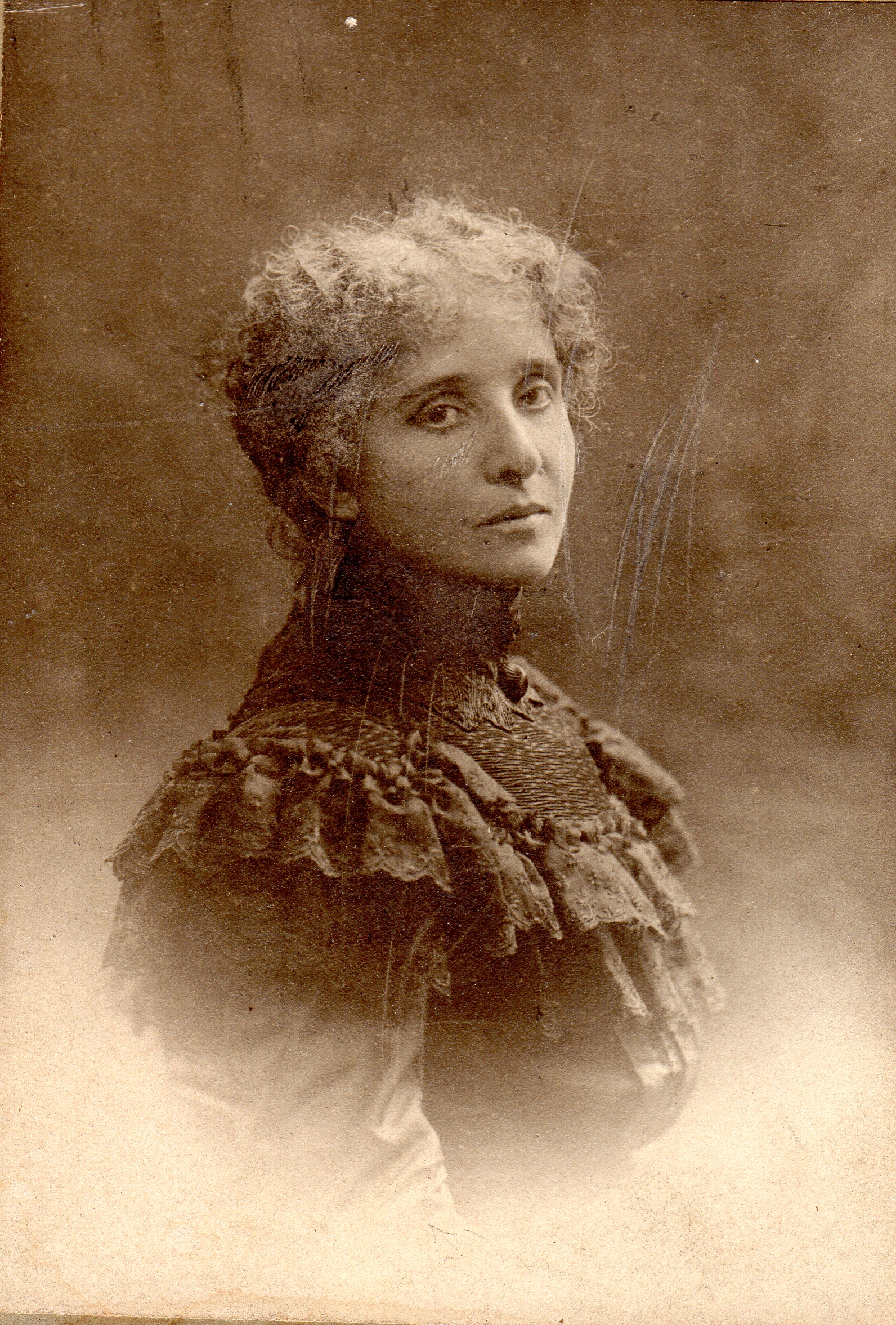Mélanie Bonis
Mélanie Hélène Bonis (born January 21, 1858 in Paris , † March 18, 1937 in Sarcelles ) was a French composer . Her works were mostly published under the pseudonym Mel Bonis .
Life
Mélanie Bonis was born into a petty-bourgeois Parisian family who barely encouraged her musical talent and only reluctantly allowed her to study at the Paris Conservatoire , which came about through the mediation of César Franck . From 1876 to 1881 she studied there successfully (as several prizes show), among others with Ernest Guiraud . Gabriel Pierné and Claude Debussy were among the classmates . In order to prevent a marriage with fellow student Amédée Hettich (1856–1937), her parents took her from the conservatory before the regular end of her studies.
In 1883 her parents forced her into a marriage with the twice widowed and 22 years older industrialist Albert Domange, who brought five children with him and lived in Sarcelles. By 1898, Mélanie Bonis had three more children in the marriage. A fourth child, born in 1899, who had to grow up in hiding (which weighed heavily on Bonis), came from the revived relationship with Hettich, who now played an important role in Parisian musical life.
Family obligations did not allow Bonis to concentrate more on composition until around 1900 (not least because of Hettich's encouragement), and the most important works were created around the start of the First World War. During this time she received several composition prizes. She became a member of the Société des Compositeurs and worked as its secretary. However, the last 15 years of her life were marked by increasing artistic isolation and illness, although she continued to compose.
plant
Among the 300 or so compositions by Bonis, there are, for example, sixty piano works, thirty organ works, chamber music (including two piano quartets - Saint-Saëns was impressed by the first one - a string quartet, a septet, one sonata each for violin, cello and flute), 25 sacred vocal works and eleven works for orchestra.
After around sixty years of oblivion, Mélanie Bonis' work has only received increased attention in the last few years. A large part of her compositions were printed by well-known French publishers during her lifetime ( Alphonse Leduc , Max Eschig and others), mostly using the pseudonym "Mel Bonis", as compositions by women were hardly taken seriously at this time. Starting from the late romanticism in the successor of César Franck, she increasingly took on influences of impressionism in her music .
Reprints
Eberhard Mayer (Ed.): Mel Bonis: Oeuvres pour piano , Vol. 1-9. Furore Verlag Kassel
literature
- Christine Géliot: Mel Bonis. Femme et "Compositeur" . Editions de l'Harmattan, 2009 (Christine Géliot is a granddaughter) - not yet used here.
- Christine Géliot: Mel Bonis: the life and work of an extraordinary woman and composer. Ingrid Mayer in Romanian. Furore Verlag, 2015, ISBN 978-3927327627
- Felix Renggli (text): French Flute Sonatas. CD booklet. DICD 920492.
- Florence Launay: Mel Bonis. In: Approaching Seven Women Composers. Edited by Clara Mayer. Furore Verlag , Kassel 2001, ISBN 3-927327-52-2 , pp. 58-77.
Movie
- 2018: female composers , ( Kyra Steckeweh and Tim van Beveren )
Web links
- Sheet music and audio files by Mel Bonis in the International Music Score Library Project
- Illustrated biography and catalog raisonné (French)
- The German Mel Bonis website / Ensemble Mel Bonis
- Mel Bonis website (French, biography also German)
- Dorothea Schenck: "Très douée, bonne musicienne" - The French composer Mel Bonis (1858–1937)
- Biography (German)
- Reprints from Furore Verlag Kassel [1] , Edition Kossack, Rheinfelden [2]
Individual evidence
- ^ Hettich, A. L. (Amédée Louis Landely) 1856– at WorldCat
- ↑ The film shows, among other things, stations in Bonis' biography, and Steckeweh plays excerpts from her Femmes de Légende.
| personal data | |
|---|---|
| SURNAME | Bonis, Mélanie |
| ALTERNATIVE NAMES | Bonis, Mel |
| BRIEF DESCRIPTION | French composer |
| DATE OF BIRTH | January 21, 1858 |
| PLACE OF BIRTH | Paris |
| DATE OF DEATH | March 18, 1937 |
| Place of death | Sarcelles |

